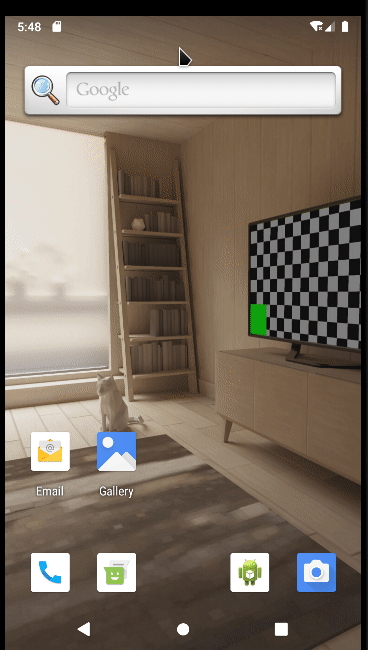1.前言
Android 车载应用开发与分析是一个系列性的文章,这个是第12篇,该系列文章旨在分析原生车载Android系统中核心应用的实现方式,帮助初次从事车载应用开发的同学,更好地理解车载应用开发的方式,积累android系统应用的开发经验。
注意:本文的源码分析部分非常的枯燥,最好还是下载android源码然后对着看,逐步理顺逻辑。
本文中使用的源码基于android-11.0.0_r48
在线源码可以使用下面的网址(基于android-11.0.0_r21)
http://aospxref.com/android-11.0.0_r21/xref/frameworks/base/packages/CarSystemUI/
http://aospxref.com/android-11.0.0_r21/xref/frameworks/base/packages/SystemUI/
2.车载 SystemUI
2.1 SystemUI 概述
SystemUI通俗的解释就是系统的 UI,在Android 系统中由SystemUI负责统一管理整个系统层的UI,它也是一个系统级应用程序(APK),但是与我们之前接触过的系统应用程序不同,SystemUI的源码在/frameworks/base/packages/目录下,而不是在/packages/目录下,这也说明了SystemUI这个应用的本质上可以归属于framework层。
- SystemUI
Android – Phone中SystemUI从源码量看就是一个相当复杂的程序,常见的如:状态栏、消息中心、近期任务、截屏以及一系列功能都是在SystemUI中实现的。
源码位置:/frameworks/base/packages/SystemUI
- CarSystemUI
Android-AutoMotive 中的SystemUI相对手机中要简单不少,目前商用车载系统中几乎必备的顶部状态栏、消息中心、底部导航栏在原生的Android系统中都已经实现了。
源码位置:frameworks/base/packages/CarSystemUI
虽然CarSystemUI与SystemUI的源码位置不同,但是二者实际上是复用关系。通过阅读CarSystemUI的Android.bp文件可以发现CarSystemUI在编译时把SystemUI以静态库的方式引入进来了。
android.bp源码位置:/frameworks/base/packages/CarSystemUI/Android.bp
android_library {
name: "CarSystemUI-core",
...
static_libs: [
"SystemUI-core",
"SystemUIPluginLib",
"SystemUISharedLib",
"SystemUI-tags",
"SystemUI-proto",
...
],
...
}
2.2 SystemUI 启动流程
Android开发者应该都听说SystemServer,它是Android framework中关键系统的服务,由Android系统最核心的进程Zygotefork生成,进程名为system_server。我们常说的ActivityManagerService、PackageManagerService、WindowManageService都是由SystemServer启动的。
而在ActivityManagerService完成启动后(SystemReady),SystemServer就会去着手启动SystemUI。
SystemServer 的源码路径:frameworks/base/services/java/com/android/server/SystemServer.java
mActivityManagerService.systemReady(() -> {
Slog.i(TAG, "Making services ready");
t.traceBegin("StartSystemUI");
try {
startSystemUi(context, windowManagerF);
} catch (Throwable e) {
reportWtf("starting System UI", e);
}
t.traceEnd();
}, t);
startSystemUi()代码细节如下.从这里我们可以看出,SystemUI本质就是一个Service,通过Pm获取到的Component 是com.android.systemui/.SystemUIService。
private static void startSystemUi(Context context, WindowManagerService windowManager) {
PackageManagerInternal pm = LocalServices.getService(PackageManagerInternal.class);
Intent intent = new Intent();
intent.setComponent(pm.getSystemUiServiceComponent());
intent.addFlags(Intent.FLAG_DEBUG_TRIAGED_MISSING);
//Slog.d(TAG, "Starting service: " + intent);
context.startServiceAsUser(intent, UserHandle.SYSTEM);
windowManager.onSystemUiStarted();
}
在startSystemUi()中启动SystemUIService,在SystemUIService的oncreate()方法中再通过SystemUIApplication.startServicesIfNeeded()来完成SystemUI的组件的初始化。
SystemUIService 源码位置:/frameworks/base/packages/SystemUI/src/com/android/systemui/SystemUIService.java
// SystemUIService
@Override
public void onCreate() {
super.onCreate();
Slog.e("SystemUIService", "onCreate");
// Start all of SystemUI
((SystemUIApplication) getApplication()).startServicesIfNeeded();
...
}
在startServicesIfNeeded()中,通过SystemUIFactory获取到配置在config.xml中每个子模块的className。
SystemUIApplication 源码位置:/frameworks/base/packages/SystemUI/src/com/android/systemui/SystemUIApplication.java
// SystemUIApplication
public void startServicesIfNeeded() {
String[] names = SystemUIFactory.getInstance().getSystemUIServiceComponents(getResources());
startServicesIfNeeded("StartServices", names);
}
// SystemUIFactory
/** Returns the list of system UI components that should be started. */
public String[] getSystemUIServiceComponents(Resources resources) {
return resources.getStringArray(R.array.config_systemUIServiceComponents);
}
<!-- SystemUI Services: The classes of the stuff to start. -->
<string-array name="config_systemUIServiceComponents" translatable="false">
<item>com.android.systemui.util.NotificationChannels</item>
<item>com.android.systemui.keyguard.KeyguardViewMediator</item>
<item>com.android.systemui.recents.Recents</item>
<item>com.android.systemui.volume.VolumeUI</item>
<item>com.android.systemui.stackdivider.Divider</item>
<item>com.android.systemui.statusbar.phone.StatusBar</item>
<item>com.android.systemui.usb.StorageNotification</item>
<item>com.android.systemui.power.PowerUI</item>
<item>com.android.systemui.media.RingtonePlayer</item>
<item>com.android.systemui.keyboard.KeyboardUI</item>
<item>com.android.systemui.pip.PipUI</item>
<item>com.android.systemui.shortcut.ShortcutKeyDispatcher</item>
<item>@string/config_systemUIVendorServiceComponent</item>
<item>com.android.systemui.util.leak.GarbageMonitor$Service</item>
<item>com.android.systemui.LatencyTester</item>
<item>com.android.systemui.globalactions.GlobalActionsComponent</item>
<item>com.android.systemui.ScreenDecorations</item>
<item>com.android.systemui.biometrics.AuthController</item>
<item>com.android.systemui.SliceBroadcastRelayHandler</item>
<item>com.android.systemui.SizeCompatModeActivityController</item>
<item>com.android.systemui.statusbar.notification.InstantAppNotifier</item>
<item>com.android.systemui.theme.ThemeOverlayController</item>
<item>com.android.systemui.accessibility.WindowMagnification</item>
<item>com.android.systemui.accessibility.SystemActions</item>
<item>com.android.systemui.toast.ToastUI</item>
</string-array>
最终在startServicesIfNeeded()中通过反射完成了每个SystemUI组件的创建,然后再调用各个SystemUI的onStart()方法来继续执行子模块的初始化。
private SystemUI[] mServices;
private void startServicesIfNeeded(String metricsPrefix, String[] services) {
if (mServicesStarted) {
return;
}
mServices = new SystemUI[services.length];
...
final int N = services.length;
for (int i = 0; i < N; i++) {
String clsName = services[i];
if (DEBUG) Log.d(TAG, "loading: " + clsName);
try {
SystemUI obj = mComponentHelper.resolveSystemUI(clsName);
if (obj == null) {
Constructor constructor = Class.forName(clsName).getConstructor(Context.class);
obj = (SystemUI) constructor.newInstance(this);
}
mServices[i] = obj;
} catch (ClassNotFoundException
| NoSuchMethodException
| IllegalAccessException
| InstantiationException
| InvocationTargetException ex) {
throw new RuntimeException(ex);
}
if (DEBUG) Log.d(TAG, "running: " + mServices[i]);
// 调用各个子模块的start()
mServices[i].start();
// 首次启动时,这里始终为false,不会被调用
if (mBootCompleteCache.isBootComplete()) {
mServices[i].onBootCompleted();
}
}
mServicesStarted = true;
}
SystemUIApplication在OnCreate()方法中注册了一个开机广播,当接收到开机广播后会调用SystemUI的onBootCompleted()方法来告诉每个子模块Android系统已经完成开机。
@Override
public void onCreate() {
super.onCreate();
Log.v(TAG, "SystemUIApplication created.");
// 设置所有服务继承的应用程序主题。
// 请注意,在清单中设置应用程序主题仅适用于activity。这里是让Service保持与主题设置同步。
setTheme(R.style.Theme_SystemUI);
if (Process.myUserHandle().equals(UserHandle.SYSTEM)) {
IntentFilter bootCompletedFilter = new IntentFilter(Intent.ACTION_BOOT_COMPLETED);
bootCompletedFilter.setPriority(IntentFilter.SYSTEM_HIGH_PRIORITY);
registerReceiver(new BroadcastReceiver() {
@Override
public void onReceive(Context context, Intent intent) {
if (mBootCompleteCache.isBootComplete()) return;
if (DEBUG) Log.v(TAG, "BOOT_COMPLETED received");
unregisterReceiver(this);
mBootCompleteCache.setBootComplete();
if (mServicesStarted) {
final int N = mServices.length;
for (int i = 0; i < N; i++) {
mServices[i].onBootCompleted();
}
}
}
}, bootCompletedFilter);
...
} else {
// 我们不需要为正在执行某些任务的子进程启动服务。
...
}
}
这里的SystemUI是一个抽象类,状态栏、近期任务等等模块都是继承自SystemUI,通过这种方式可以很大程度上简化复杂的SystemUI程序中各个子模块创建方式,同时我们可以通过配置资源的方式动态加载需要的SystemUI模块。
在实际的项目中开发我们自己的SystemUI时,这种初始化子模块的方式是值得我们学习的,不过由于原生的SystemUI使用了AOP框架 – Dagger来创建组件,所以SystemUI子模块的初始化细节就不再介绍了。
SystemUI的源码如下,方法基本都能见名知意,就不再介绍了。
public abstract class SystemUI implements Dumpable {
protected final Context mContext;
public SystemUI(Context context) {
mContext = context;
}
public abstract void start();
protected void onConfigurationChanged(Configuration newConfig) {
}
// 非核心功能,可以不用关心
@Override
public void dump(@NonNull FileDescriptor fd, @NonNull PrintWriter pw, @NonNull String[] args) {
}
protected void onBootCompleted() {
}
总结一下,SystemUI的大致启动流程可以归纳如下(时序图语法并不严谨,理解即可)

3.CarSystemUI 的启动流程
之前也提到过CarSystemUI复用了手机SystemUI的代码,所以CarSystemUI的启动流程和SystemUI的是完全一致的。
这里就有个疑问,CarSystemUI中需要的功能与SystemUI中是有差异的,那么是这些差异化的功能是如何引入并完成初始化?以及一些手机的SystemUI才需要的功能是如何去除的呢?
其实很简单,在SystemUI的启动流程中我们得知,各个子模块的className是通过SystemUIFactory的getSystemUIServiceComponents()获取到的,那么只要继承SystemUIFactory并重写getSystemUIServiceComponents()就可以了。
public class CarSystemUIFactory extends SystemUIFactory {
@Override
protected SystemUIRootComponent buildSystemUIRootComponent(Context context) {
return DaggerCarSystemUIRootComponent.builder()
.contextHolder(new ContextHolder(context))
.build();
}
@Override
public String[] getSystemUIServiceComponents(Resources resources) {
Set<String> names = new HashSet<>();
// 先引入systemUI中的components
for (String s : super.getSystemUIServiceComponents(resources)) {
names.add(s);
}
// 再移除CarsystemUI不需要的components
for (String s : resources.getStringArray(R.array.config_systemUIServiceComponentsExclude)) {
names.remove(s);
}
// 最后再添加CarsystemUI特有的components
for (String s : resources.getStringArray(R.array.config_systemUIServiceComponentsInclude)) {
names.add(s);
}
String[] finalNames = new String[names.size()];
names.toArray(finalNames);
return finalNames;
}
}
<!-- 需要移除的Components. -->
<string-array name="config_systemUIServiceComponentsExclude" translatable="false">
<item>com.android.systemui.recents.Recents</item>
<item>com.android.systemui.volume.VolumeUI</item>
<item>com.android.systemui.stackdivider.Divider</item>
<item>com.android.systemui.statusbar.phone.StatusBar</item>
<item>com.android.systemui.keyboard.KeyboardUI</item>
<item>com.android.systemui.pip.PipUI</item>
<item>com.android.systemui.shortcut.ShortcutKeyDispatcher</item>
<item>com.android.systemui.LatencyTester</item>
<item>com.android.systemui.globalactions.GlobalActionsComponent</item>
<item>com.android.systemui.SliceBroadcastRelayHandler</item>
<item>com.android.systemui.statusbar.notification.InstantAppNotifier</item>
<item>com.android.systemui.accessibility.WindowMagnification</item>
<item>com.android.systemui.accessibility.SystemActions</item>
</string-array>
<!-- 新增的Components. -->
<string-array name="config_systemUIServiceComponentsInclude" translatable="false">
<item>com.android.systemui.car.navigationbar.CarNavigationBar</item>
<item>com.android.systemui.car.voicerecognition.ConnectedDeviceVoiceRecognitionNotifier</item>
<item>com.android.systemui.car.window.SystemUIOverlayWindowManager</item>
<item>com.android.systemui.car.volume.VolumeUI</item>
</string-array>
通过以上方式,就完成了CarSystemUI子模块的替换。
由于CarSystemUI模块的源码量极大,全部分析一遍再写成文章耗费的时间将无法估计,这里结合我个人在车载方面的工作经验,拣出了一些在商用车载项目必备的功能,来分析它们在原生系统中是如何实现的。
3.顶部状态栏与底部导航栏
- 顶部状态栏
状态栏是CarSystemUI中一个功能重要的功能,它负责向用户展示操作系统当前最基本信息,例如:时间、蜂窝网络的信号强度、蓝牙信息、wifi信息等。
- 底部导航栏
在原生的车载Android系统中,底部的导航按钮由经典的三颗返回、主页、菜单键替换成如下图所示的七颗快捷功能按钮。从左到右依次主页、地图、蓝牙音乐、蓝牙电话、桌面、消息中心、语音助手。
3.1 布局方式
- 顶部状态栏
顶部状态栏的布局方式比较简单,如下图所示:
布局文件的源码就不贴了,量比较大,而且包含了许多的自定义View,如果不是为了学习如何自定义View阅读的意义不大。
源码位置:frameworks/base/packages/CarSystemUI/res/layout/car_top_navigation_bar.xml
- 底部导航栏
底部状态栏的布局方式就更简单了,如下图所示:
不过比较有意思的是,导航栏、状态栏每个按钮对应的Action的intent都是直接定义在布局文件的xml中的,这点或许值得参考。
<com.android.systemui.car.navigationbar.CarNavigationButton
android:id="@+id/grid_nav"
style="@style/NavigationBarButton"
systemui:componentNames="com.android.car.carlauncher/.AppGridActivity"
systemui:highlightWhenSelected="true"
systemui:icon="@drawable/car_ic_apps"
systemui:intent="intent:#Intent;component=com.android.car.carlauncher/.AppGridActivity;launchFlags=0x24000000;end"
systemui:selectedIcon="@drawable/car_ic_apps_selected" />
3.2 初始化流程
在SystemUI的启动流程中,SystemUIApplication在通过反射创建好CarNavigationBar后,紧接就调用了start()方法,那么我们就从start()入手,开始UI的初始化流程。
在start()方法中,首先是向IStatusBarService中注册一个CommandQueue,然后执行createNavigationBar()方法,并把注册的结果下发。
CommandQueue继承自IStatusBar.Stub。因此它是IStatusBar的服务(Bn)端。在完成注册后,这一Binder对象的客户端(Bp)端将会保存在IStatusBarService之中。因此它是IStatusBarService与BaseStatusBar进行通信的桥梁。
IStatusBarService,即系统服务StatusBarManagerService是状态栏导航栏向外界提供服务的前端接口,运行于system_server进程中。
注意:定制SystemUI时,我们可以不使用 IStatusBarService 和 IStatusBar 来保存 SystemUI 的状态
// CarNavigationBar
private final CommandQueue mCommandQueue;
private final IStatusBarService mBarService;
@Override
public void start() {
...
RegisterStatusBarResult result = null;
try {
result = mBarService.registerStatusBar(mCommandQueue);
} catch (RemoteException ex) {
ex.rethrowFromSystemServer();
}
...
createNavigationBar(result);
...
}
在createNavigationBar()中依次执行buildNavBarWindows()、buildNavBarContent()、attachNavBarWindows()。
// CarNavigationBar
private void createNavigationBar(RegisterStatusBarResult result) {
buildNavBarWindows();
buildNavBarContent();
attachNavBarWindows();
// 如果注册成功,尝试设置导航条的初始状态。
if (result != null) {
setImeWindowStatus(Display.DEFAULT_DISPLAY, result.mImeToken,
result.mImeWindowVis, result.mImeBackDisposition,
result.mShowImeSwitcher);
}
}
下面依次介绍每个方法的实际作用。
- buildNavBarWindows() 这个方法目的是创建出状态栏的容器 – navigation_bar_window。
// CarNavigationBar
private final CarNavigationBarController mCarNavigationBarController;
private void buildNavBarWindows() {
mTopNavigationBarWindow = mCarNavigationBarController.getTopWindow();
mBottomNavigationBarWindow = mCarNavigationBarController.getBottomWindow();
...
}
// CarNavigationBarController
private final NavigationBarViewFactory mNavigationBarViewFactory;
public ViewGroup getTopWindow() {
return mShowTop ? mNavigationBarViewFactory.getTopWindow() : null;
}
// NavigationBarViewFactory
public ViewGroup getTopWindow() {
return getWindowCached(Type.TOP);
}
private ViewGroup getWindowCached(Type type) {
if (mCachedContainerMap.containsKey(type)) {
return mCachedContainerMap.get(type);
}
ViewGroup window = (ViewGroup) View.inflate(mContext,
R.layout.navigation_bar_window, /* root= */ null);
mCachedContainerMap.put(type, window);
return mCachedContainerMap.get(type);
}
navigation_bar_window 是一个自定义View(NavigationBarFrame),它的核心类是DeadZone.
DeadZone字面意思就是“死区”,它的作用是消耗沿导航栏顶部边缘的无意轻击。当用户在输入法上快速输入时,他们可能会尝试点击空格键、“overshoot”,并意外点击主页按钮。每次点击导航栏外的UI后,死区会暂时扩大(因为这是偶然点击更可能发生的情况),然后随着时间的推移,死区又会缩小(因为稍后的点击可能是针对导航栏顶部的)。
navigation_bar_window 源码位置:/frameworks/base/packages/SystemUI/res/layout/navigation_bar_window.xml
- buildNavBarContent()
这个方法目的是将状态栏的实际View添加到上一步创建出的容器中,并对触摸和点击事件进行初始化。
// CarNavigationBar
private void buildNavBarContent() {
mTopNavigationBarView = mCarNavigationBarController.getTopBar(isDeviceSetupForUser());
if (mTopNavigationBarView != null) {
mSystemBarConfigs.insetSystemBar(SystemBarConfigs.TOP, mTopNavigationBarView);
mTopNavigationBarWindow.addView(mTopNavigationBarView);
}
mBottomNavigationBarView = mCarNavigationBarController.getBottomBar(isDeviceSetupForUser());
if (mBottomNavigationBarView != null) {
mSystemBarConfigs.insetSystemBar(SystemBarConfigs.BOTTOM, mBottomNavigationBarView);
mBottomNavigationBarWindow.addView(mBottomNavigationBarView);
}
...
}
// CarNavigationBarController
public CarNavigationBarView getTopBar(boolean isSetUp) {
if (!mShowTop) {
return null;
}
mTopView = mNavigationBarViewFactory.getTopBar(isSetUp);
setupBar(mTopView, mTopBarTouchListener, mNotificationsShadeController);
return mTopView;
}
// 初始化
private void setupBar(CarNavigationBarView view, View.OnTouchListener statusBarTouchListener,
NotificationsShadeController notifShadeController) {
view.setStatusBarWindowTouchListener(statusBarTouchListener);
view.setNotificationsPanelController(notifShadeController);
mButtonSelectionStateController.addAllButtonsWithSelectionState(view);
mButtonRoleHolderController.addAllButtonsWithRoleName(view);
mHvacControllerLazy.get().addTemperatureViewToController(view);
}
// NavigationBarViewFactory
public CarNavigationBarView getTopBar(boolean isSetUp) {
return getBar(isSetUp, Type.TOP, Type.TOP_UNPROVISIONED);
}
private CarNavigationBarView getBar(boolean isSetUp, Type provisioned, Type unprovisioned) {
CarNavigationBarView view;
if (isSetUp) {
view = getBarCached(provisioned, sLayoutMap.get(provisioned));
} else {
view = getBarCached(unprovisioned, sLayoutMap.get(unprovisioned));
}
if (view == null) {
String name = isSetUp ? provisioned.name() : unprovisioned.name();
Log.e(TAG, "CarStatusBar failed inflate for " + name);
throw new RuntimeException(
"Unable to build " + name + " nav bar due to missing layout");
}
return view;
}
private CarNavigationBarView getBarCached(Type type, @LayoutRes int barLayout) {
if (mCachedViewMap.containsKey(type)) {
return mCachedViewMap.get(type);
}
//
CarNavigationBarView view = (CarNavigationBarView) View.inflate(mContext, barLayout,
/* root= */ null);
// 在开头包括一个FocusParkingView。当用户导航到另一个窗口时,旋转控制器将焦点“停”在这里。这也用于防止wrap-around.。
view.addView(new FocusParkingView(mContext), 0);
mCachedViewMap.put(type, view);
return mCachedViewMap.get(type);
}
- attachNavBarWindows()
最后一步,将创建的View通过windowManger显示到屏幕上。
private void attachNavBarWindows() {
mSystemBarConfigs.getSystemBarSidesByZOrder().forEach(this::attachNavBarBySide);
}
private void attachNavBarBySide(int side) {
switch(side) {
case SystemBarConfigs.TOP:
if (mTopNavigationBarWindow != null) {
mWindowManager.addView(mTopNavigationBarWindow,
mSystemBarConfigs.getLayoutParamsBySide(SystemBarConfigs.TOP));
}
break;
case SystemBarConfigs.BOTTOM:
if (mBottomNavigationBarWindow != null && !mBottomNavBarVisible) {
mBottomNavBarVisible = true;
mWindowManager.addView(mBottomNavigationBarWindow,
mSystemBarConfigs.getLayoutParamsBySide(SystemBarConfigs.BOTTOM));
}
break;
...
break;
default:
return;
}
}
简单总结一下,UI初始化的流程图如下。
3.3 关键功能
3.3.1 打开/关闭消息中心
在原生车载Android中有两种方式打开消息中心分别是,1.通过点击消息中心按钮,2.通过手势下拉状态栏。
我们先来看第一种实现方式 ,通过点击按钮展开消息中心。
CarNavigationBarController中对外暴露了一个可以注册监听回调的方法,CarNavigationBarController会把外部注册的监听事件会传递到CarNavigationBarView中。
/** 设置切换通知面板的通知控制器。 */
public void registerNotificationController(
NotificationsShadeController notificationsShadeController) {
mNotificationsShadeController = notificationsShadeController;
if (mTopView != null) {
mTopView.setNotificationsPanelController(mNotificationsShadeController);
}
...
}
当CarNavigationBarView中的notifications按钮被按下时,就会将打开消息中心的消息回调给之前注册进来的接口。
// CarNavigationBarView
@Override
public void onFinishInflate() {
...
mNotificationsButton = findViewById(R.id.notifications);
if (mNotificationsButton != null) {
mNotificationsButton.setOnClickListener(this::onNotificationsClick);
}
...
}
protected void onNotificationsClick(View v) {
if (mNotificationsShadeController != null) {
mNotificationsShadeController.togglePanel();
}
}
消息中心的控制器在接收到回调消息后,根据需要执行展开消息中心面板的方法即可
// NotificationPanelViewMediator
mCarNavigationBarController.registerNotificationController(
new CarNavigationBarController.NotificationsShadeController() {
@Override
public void togglePanel() {
mNotificationPanelViewController.toggle();
}
// 这个方法用于告知外部类,当前消息中心的面板是否处于展开状态
@Override
public boolean isNotificationPanelOpen() {
return mNotificationPanelViewController.isPanelExpanded();
}
});
再来看第二种实现方式 ,通过下拉手势展开消息中心,这也是我们最常用的方式。
实现思路第一种方式一样,CarNavigationBarController中对外暴露了一个可以注册监听回调的方法,接着会把外部注册的监听事件会传递给CarNavigationBarView。
// CarNavigationBarController
public void registerTopBarTouchListener(View.OnTouchListener listener) {
mTopBarTouchListener = listener;
if (mTopView != null) {
mTopView.setStatusBarWindowTouchListener(mTopBarTouchListener);
}
}
这次在CarNavigationBarView中则是拦截了触摸事件的分发,如果当前消息中心已经展开,则CarNavigationBarView直接消费触摸事件,后续事件不再对外分发。如果当前消息中心没有展开,则将触摸事件分外给外部,这里的外部就是指消息中心中的TopNotificationPanelViewMediator。
// CarNavigationBarView
// 用于连接通知的打开/关闭手势
private OnTouchListener mStatusBarWindowTouchListener;
public void setStatusBarWindowTouchListener(OnTouchListener statusBarWindowTouchListener) {
mStatusBarWindowTouchListener = statusBarWindowTouchListener;
}
@Override
public boolean onInterceptTouchEvent(MotionEvent ev) {
if (mStatusBarWindowTouchListener != null) {
boolean shouldConsumeEvent = mNotificationsShadeController == null ? false
: mNotificationsShadeController.isNotificationPanelOpen();
// 将触摸事件转发到状态栏窗口,以便在需要时拖动窗口(Notification shade)
mStatusBarWindowTouchListener.onTouch(this, ev);
if (mConsumeTouchWhenPanelOpen && shouldConsumeEvent) {
return true;
}
}
return super.onInterceptTouchEvent(ev);
}
TopNotificationPanelViewMediator在初始化过程中就向CarNavigationBarController注册了触摸事件的监听。
.// TopNotificationPanelViewMediator
@Override
public void registerListeners() {
super.registerListeners();
getCarNavigationBarController().registerTopBarTouchListener(
getNotificationPanelViewController().getDragOpenTouchListener());
}
最终状态栏的触摸事件会在OverlayPanelViewController中得到处理。
// OverlayPanelViewController
public final View.OnTouchListener getDragOpenTouchListener() {
return mDragOpenTouchListener;
}
mDragOpenTouchListener = (v, event) -> {
if (!mCarDeviceProvisionedController.isCurrentUserFullySetup()) {
return true;
}
if (!isInflated()) {
getOverlayViewGlobalStateController().inflateView(this);
}
boolean consumed = openGestureDetector.onTouchEvent(event);
if (consumed) {
return true;
}
// 判断是否要展开、收起 消息中心的面板
maybeCompleteAnimation(event);
return true;
};
3.3.2 占用应用的显示区域
不知道你有没有这样的疑问,既然顶部的状态栏和底部导航栏都是通过WindowManager.addView()显示到屏幕上,那么打开应用为什么会自动“让出”状态栏占用的区域呢?
主要原因在于状态栏的Window的Type和我们平常使用的TYPE_APPLICATION是不一样的。
private WindowManager.LayoutParams getLayoutParams() {
WindowManager.LayoutParams lp = new WindowManager.LayoutParams(
isHorizontalBar(mSide) ? ViewGroup.LayoutParams.MATCH_PARENT : mGirth,
isHorizontalBar(mSide) ? mGirth : ViewGroup.LayoutParams.MATCH_PARENT,
mapZOrderToBarType(mZOrder),
WindowManager.LayoutParams.FLAG_NOT_FOCUSABLE
| WindowManager.LayoutParams.FLAG_NOT_TOUCH_MODAL
| WindowManager.LayoutParams.FLAG_WATCH_OUTSIDE_TOUCH
| WindowManager.LayoutParams.FLAG_SPLIT_TOUCH,
PixelFormat.TRANSLUCENT);
lp.setTitle(BAR_TITLE_MAP.get(mSide));
lp.providesInsetsTypes = new int[]{BAR_TYPE_MAP[mBarType], BAR_GESTURE_MAP.get(mSide)};
lp.setFitInsetsTypes(0);
lp.windowAnimations = 0;
lp.gravity = BAR_GRAVITY_MAP.get(mSide);
return lp;
}
private int mapZOrderToBarType(int zOrder) {
return zOrder >= HUN_ZORDER ? WindowManager.LayoutParams.TYPE_NAVIGATION_BAR_PANEL
: WindowManager.LayoutParams.TYPE_STATUS_BAR_ADDITIONAL;
}
CarSystemUI顶部的状态栏WindowType是 TYPE_STATUS_BAR_ADDITIONAL
底部导航栏的WindowType是 TYPE_NAVIGATION_BAR_PANEL。
4. 总结
SystemUI在原生的车载Android系统是一个极其复杂的模块,考虑多数从手机应用转行做车载应用的开发者并对SystemUI的了解并不多,本篇介绍了CarSystemUI的启动、和状态栏的实现方式,希望能帮到正在或以后会从事SystemUI开发的同学。
除此以外,车载SystemUI中还有“消息中心”、“近期任务”等一些关键模块,这些内容就放到以后再做介绍吧。
1、本站所有资源均从互联网上收集整理而来,仅供学习交流之用,因此不包含技术服务请大家谅解!
2、本站不提供任何实质性的付费和支付资源,所有需要积分下载的资源均为网站运营赞助费用或者线下劳务费用!
3、本站所有资源仅用于学习及研究使用,您必须在下载后的24小时内删除所下载资源,切勿用于商业用途,否则由此引发的法律纠纷及连带责任本站和发布者概不承担!
4、本站站内提供的所有可下载资源,本站保证未做任何负面改动(不包含修复bug和完善功能等正面优化或二次开发),但本站不保证资源的准确性、安全性和完整性,用户下载后自行斟酌,我们以交流学习为目的,并不是所有的源码都100%无错或无bug!如有链接无法下载、失效或广告,请联系客服处理!
5、本站资源除标明原创外均来自网络整理,版权归原作者或本站特约原创作者所有,如侵犯到您的合法权益,请立即告知本站,本站将及时予与删除并致以最深的歉意!
6、如果您也有好的资源或教程,您可以投稿发布,成功分享后有站币奖励和额外收入!
7、如果您喜欢该资源,请支持官方正版资源,以得到更好的正版服务!
8、请您认真阅读上述内容,注册本站用户或下载本站资源即您同意上述内容!
原文链接:https://www.dandroid.cn/archives/17443,转载请注明出处。




评论0